What Happens When You Use Cheap Lumber
If framing goes up with bowed studs, crowned joists, or inconsistent beams, you’ll feel it all the way through finish.
-
Walls don’t stay flat
-
Drywall seams crack
-
Doors don’t hang square
-
Trim doesn’t sit flush
-
Cabinets need to be scribed
-
Floors squeak or bounce
-
Stairs settle unevenly
-
Hardware needs constant adjusting
And all of that adds labor, time, and callbacks for you or every sub that follows. You might save $2,000 on the package, but you’ll pay double that across the trades cleaning up the mess.
That’s why material quality — and how you source it — actually matters.
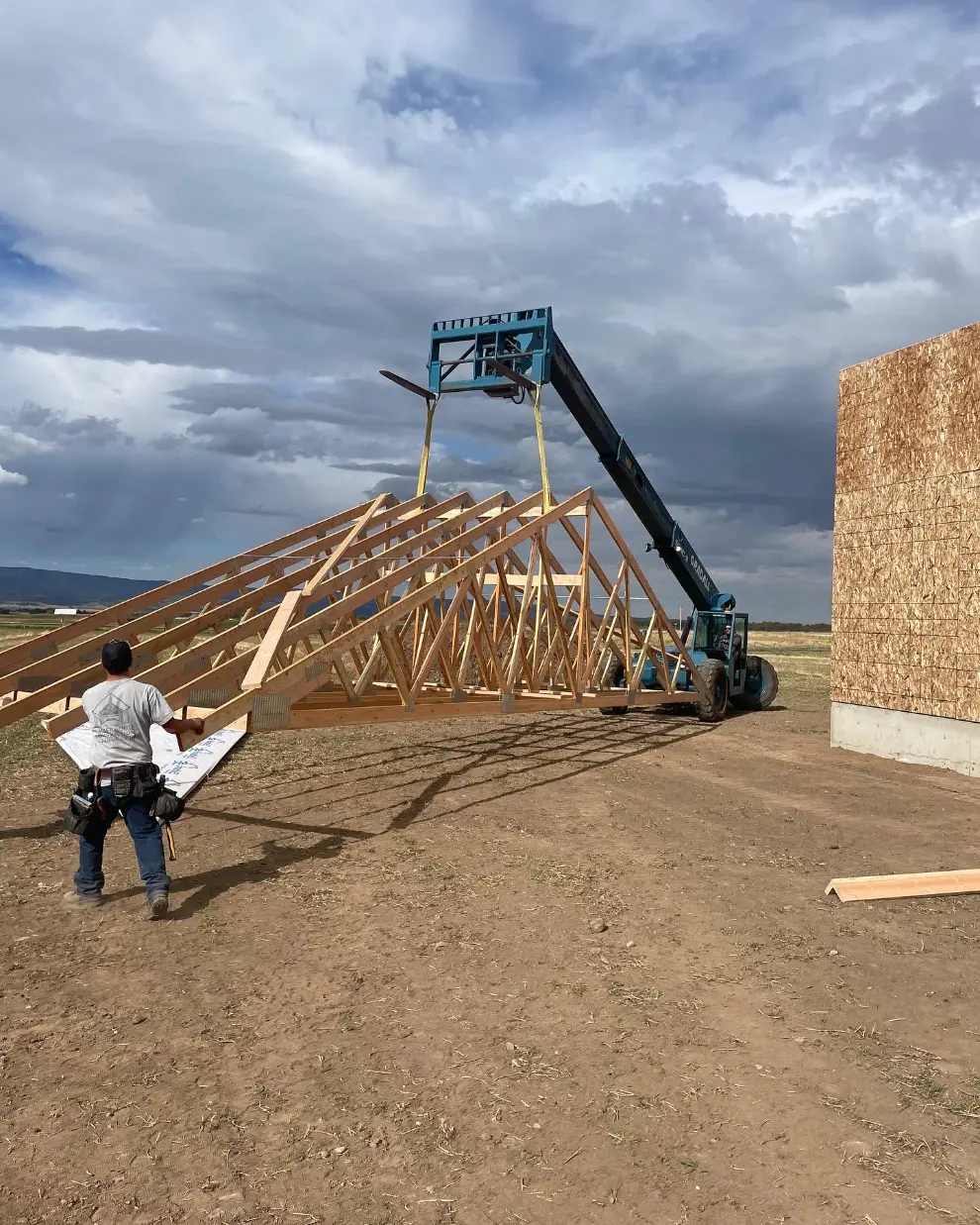
What We Look for in Framing Lumber
We spec lumber based on performance, not just what’s in stock or what’s cheapest.
Grain, Grade, and Stability
We typically prefer kiln-dried Douglas Fir or Hem-Fir for most structural walls. It’s stronger and straighter than SPF, and tends to move less over time. If the design calls for tall walls, wide openings, or exposed framing, we’ll upgrade to Select Structural grade when available — cleaner grain, fewer knots, and tighter tolerances.
That said, grades vary by yard, and not all Select Struct is better if it’s been sitting outside. We weigh grade against quality at delivery.
Dryness and Handling
We avoid green lumber whenever possible. Kiln-dried material holds straighter, shrinks less, and gives the rest of the trades a better shot at clean work. We also prefer working with yards that store their framing stock under cover — not warped from sitting sunbaked in a gravel lot.
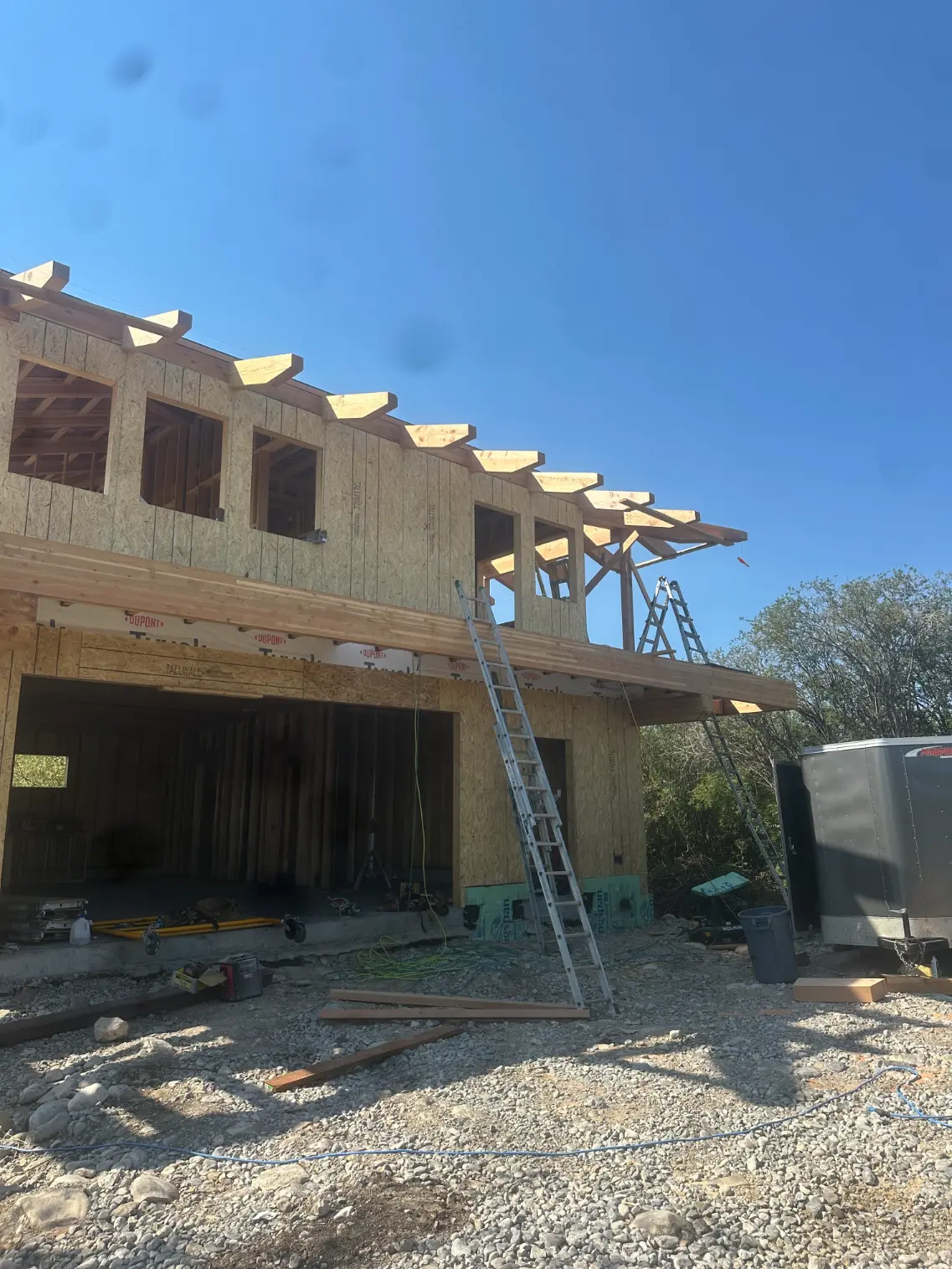
Framing Packages: What’s Inside
We treat the framing package as part of the build — not a bulk order. Here’s what typically goes in:
Framing Stock
We request dry, straight studs with consistent grain. If the job demands it, we spec premium grades. If it’s standard structural, we still avoid soft, twist-prone white wood. Clean framing = faster finish work, less waste, better everything.
Floor Systems
Engineered joists (TJI, RFPI, etc.), rim board, and beams are sized to the layout. That means fewer headaches for plumbing and HVAC, better floor feel, and less deflection under tile or wood flooring. We plan it all before it hits the site.
Headers, Beams & Posts
We spec LVLs, LSLs, and glulams based on actual span and load — not stock guesses. This keeps everything tight, level, and long-term solid. Undersized beams lead to sag. We don’t do that.
Sheathing & Subfloor
Most builds use ¾” T&G OSB with full glue spread. If we expect weather exposure or a delayed dry-in, we’ll upgrade to Advantech — a premium resin-infused subfloor that resists swelling and holds fasteners better. Not every job needs it, but when it makes sense, we use it.
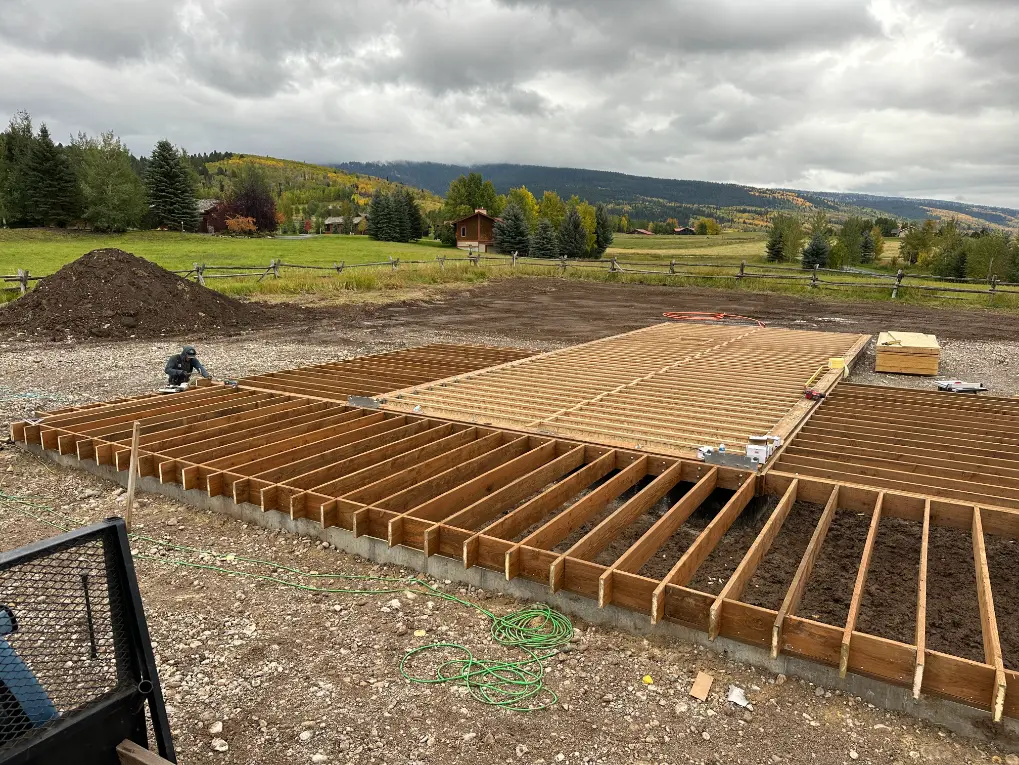
Where We Source
We’ve ordered lumber packages from multiple suppliers depending on project needs:
-
Jenkins Lumber – Alpine, WY
-
Valley Lumber – Driggs, ID
-
SunPro – Rexburg, ID
-
Out-of-state yards – Montana or Washington when the quality or cost justifies freight
Some yards have better-engineered stock. Some carry better framing studs. We source based on what performs, not what’s convenient.
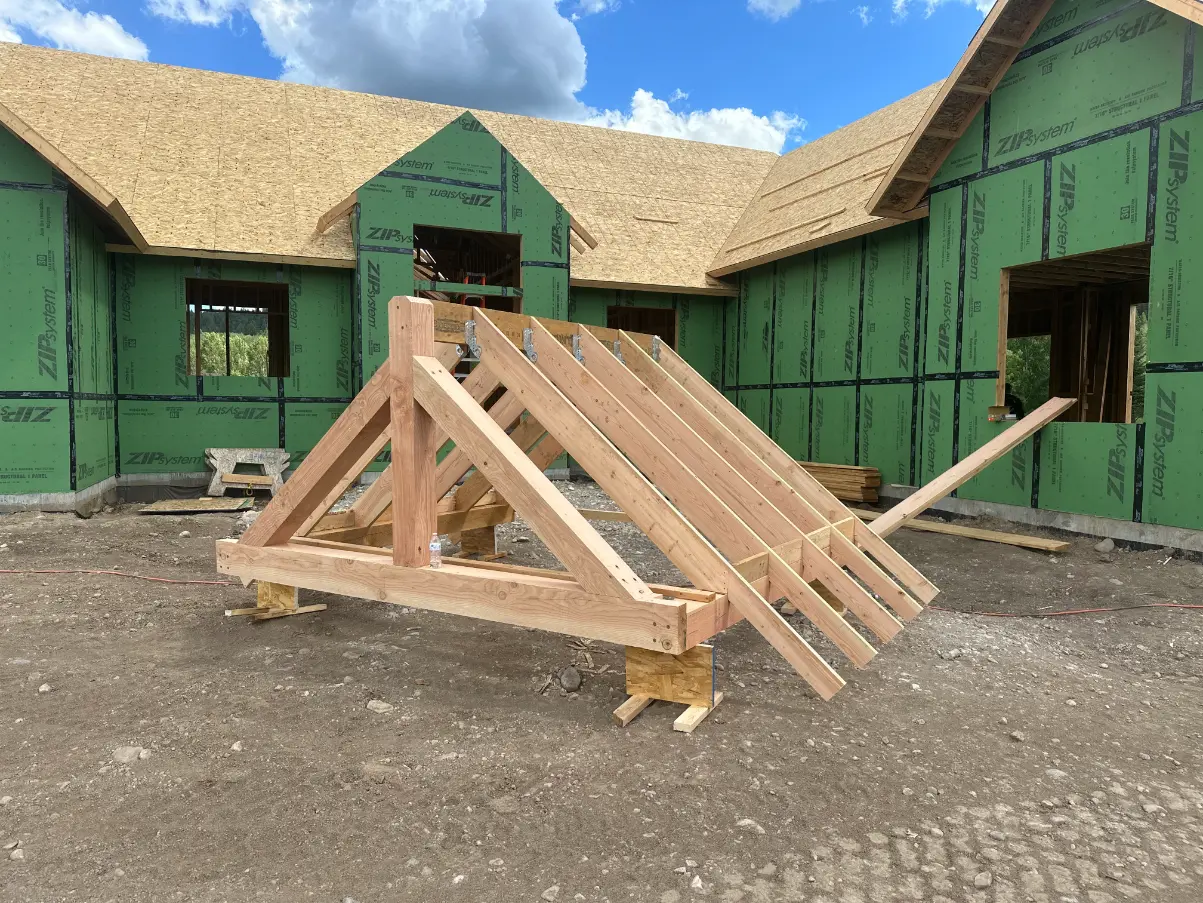
Trusses
We work with Inteframe in Blackfoot, ID for roof and floor trusses. They’re fast, responsive, and build to spec. Good trusses save time. Bad ones stall jobs. We don’t gamble on the structural core of the build.
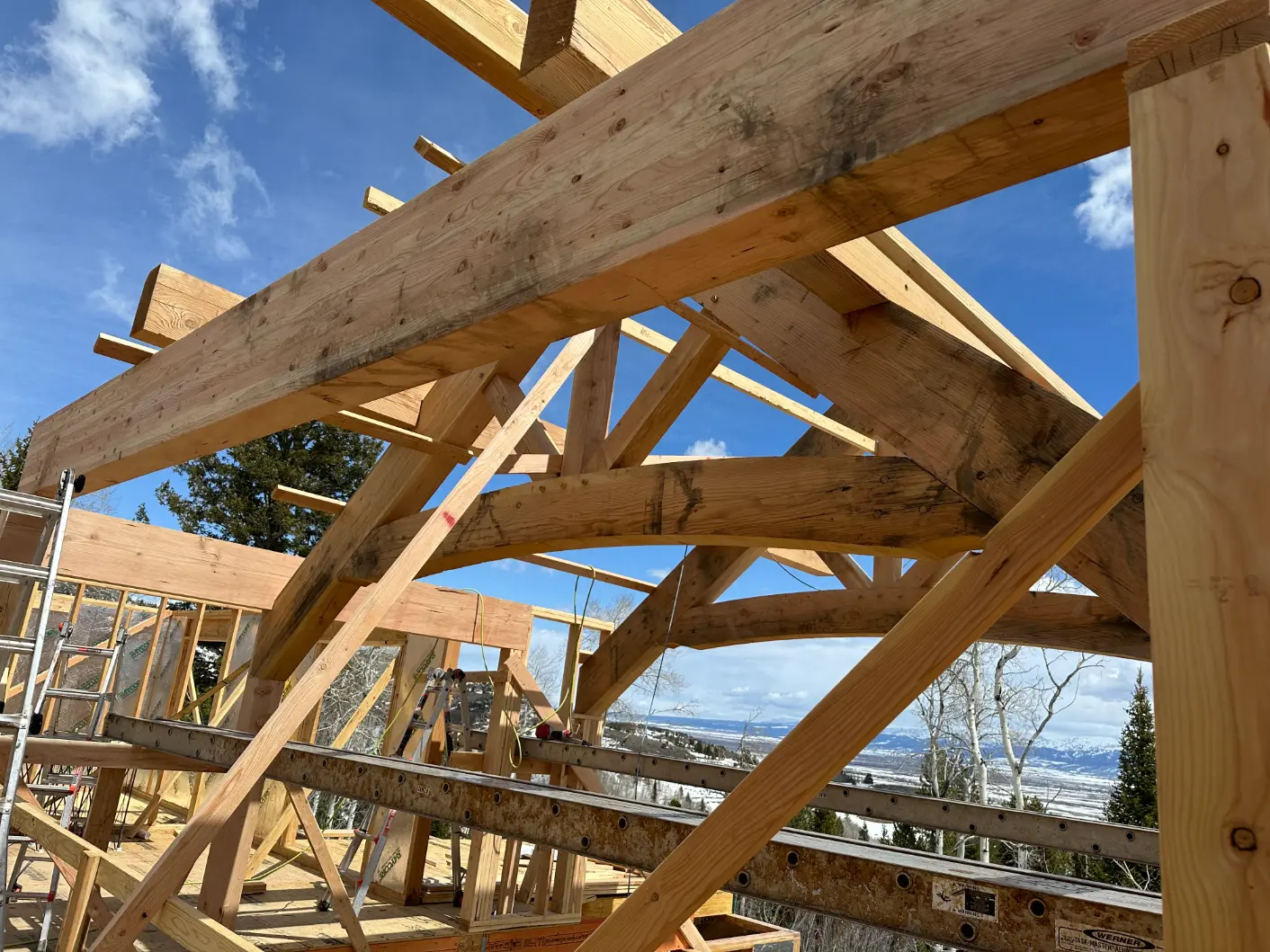
Final Word
Your framing package affects everything — from mechanicals to finish carpentry. That’s why we take the time to source materials that are straight, dry, and built to last. We frame clean, so the rest of the build goes smoother. And we don’t let bad lumber make our work look bad.
